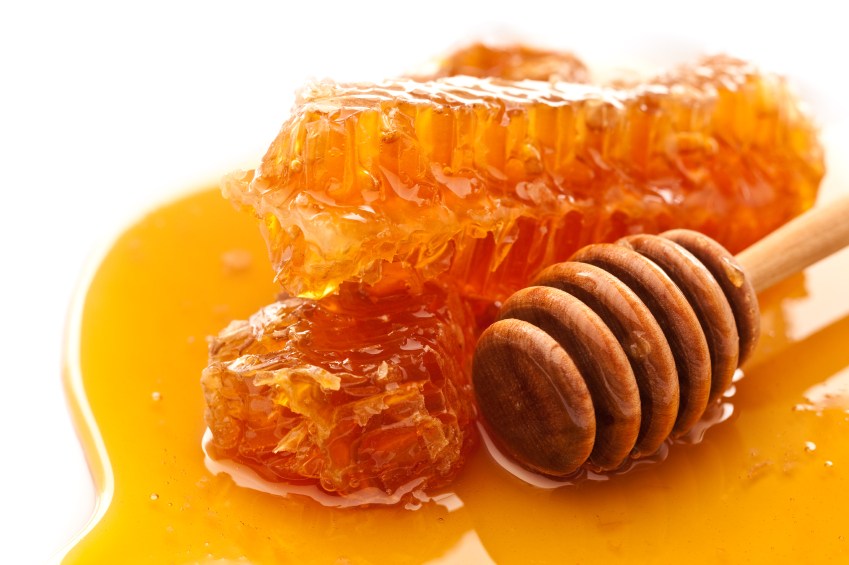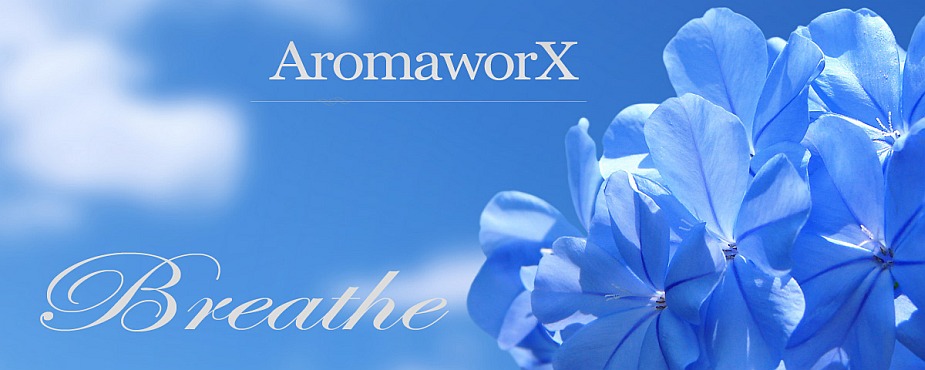This article was posted by CrystalWind.ca.
Raw Honey : Probiotics that Boosts Immunity
- Details

Honey has a world of health benefits that science is only beginning to uncover. Now, new research reveals that raw honey in particular has special immune boosting properties as well.
Prior research has shown that honey's ability to stimulate the immune system had a lot to do with the fact that flower nectars contain plant polyphenols and other phytochemicals.
Well, we can now add another reason for honey's ability to stimulate the immune system: A particular probiotic bacteria endemic among honeybees.
The understanding of this probiotic reveals a number of key elements regarding honey and the honeybees – regarding fructose digestion and even honeybee colony collapse.
The probiotic of the beehive
The probiotic bacteria is Lactobacillus kunkeei. This bacteria was initially studied in relation to winemaking, because it was often found when a winemaking fermentation process became "stuck." As such, the bacteria has been implicated among spoilage disasters in winemaking and grape juice processors.
But Lactobacillus kunkeei has more recently been found among honeybees, and a new sequencing method employed at the Prefectural University of Hiroshima has found that this probiotic bacteria is not only used by honeybees: It is also contained in the honey, bee pollen and royal jelly produced in the hive.
This also means that by eating raw honey, we may be consuming this probiotic bacteria as well. Is it good for us?
Immune-boosting bacteria
To investigate the effects of this probiotic bacteria, the researchers mentioned above first tested two strains of the Lactobacillus kunkeei bacteria on cells within the laboratory. When the cells were exposed to heat-killed Lactobacillus kunkeei bacteria, the cells initiated an IgA response – meaning they stimulated the cells' immunity processes.
The researchers then gave 1,000 milligrams of heat-killed Lactobacillus kunkeei to 11 healthy adults for a month. The researchers found that the Lactobacillus kunkeei increased saliva IgA concentrations and secretion among the subjects. This means that it significantly stimulated the immune system.
The researchers confirmed the discovery of this information:
"This is the first report of microbiota analysis of royal jelly and the immune efficacy of L. kunkeei from honeybee products in humans."
What are 'heat-killed' bacteria?
Remember that the honey bacteria tested in the study above was heat-killed. This means the bacteria were first heated to the point where they died. In this state, the bacteria are no longer alive. They are not consuming food (called fermentation). They are also not producing acids and antibiotic substances – as living probiotics do.
But when a bacteria is heat-killed, it will go down fighting. It will produce a number of acids and antibiotic substances as it seeks to protect itself from its impending death.
This is why a heat-killed bacteria can still provoke immunity: Those immunity chemicals are in the mix.
But this also means that the living bacteria will do even a better job at stimulating the immune system. Not just a one-shot, but an ongoing immunity stimulation – as long as those bacteria remain alive in the system.
Implications of raw versus refined honey
This heat-killing is what normally happens in most conventional honey production because conventional honey is typically heated and then filtered. This heating process will allow the honey to more easily be run through a filter so the particulates can be screened out.
However, a true raw honey is not heated, nor filtered. You can easily tell a raw honey from a heated-filtered honey because the heated-filtered honey will be clear and the raw honey will have a creamy darker color – and you can't see through it.
This also means a raw honey will contain the living forms of this immune-boosting probiotic bacteria.
The existence of this probiotic can now explain why raw honey has been found to be not only immune-stimulating but also antibiotic. Why? Because probiotics secrete numerous natural compounds to kill off those bacteria that threaten their territories.
Sure, honey also contains phytochemicals from the plant's nectar that stimulate the immune system. We cannot deny that, as other honey research has shown that honey from immunity-stimulating plants (such as Manuka flowers) has more antimicrobial properties than honey from bees that harvest from other plants.
Probiotics from flowers
Honey is stored as energy for bees for wintertime when there are theoretically no more flowers to feed from. Flowers, it seems provide more than just the pollen and nectar - they also provide the bacteria important to the storage and protection of the honey.
A healthy bee produces honey by mixing the flower nectar with saliva and collectively regurgitating it by trading it back and forth between bees. This process infuses the sweetness of the pollen with the probiotic bacteria from the bee's digestive juices – thereby protecting it. This protection doesn't just come from digestive juices however: It also comes from the probiotic bacteria that the bees host. Where do they get this bacteria from?
Several studies by researchers from South Africa's University of Stellenbosch have investigated numerous strains of L. kunkeei, collected from flowers, honey and in wine production. The important part of the collections from flowers is these flowers were fresh. In other words, the L. kunkeei bacteria have a symbiotic relationship not only with bees and thus humans – but also with these flowers. Thus the flower nectars are providing the bees with bacteria.
As I discuss in my book on the subject, probiotic bacteria provide numerous benefits to their host. These include providing direct antibiotic immune function, assisting and stimulating the immune system, and providing enzymes for digestion along with other chemicals used by the metabolism of the host.
This ongoing investigation on bee bacteria finds that the L. kunkeei bacteria initially provide probiotic activity to nectar-containing flowers. This means that bees are not just harvesting the pollen nectar from flowers: They are also harvesting these beneficial bacteria, which provide probiotic services to the beehive.
Another dimension to bee colony collapse
Indeed, after finding no less than 66 strains of L. kunkeei and a related species among honeybee hives, the at University of Stellenbosch researchers conducted a study testing a disease pathogen that threatens many hives throughout the world.
The infective pathogen is Melissococcus plutonius, and this is the cause of a honeybee disease called European foulbrood. This has also been implicated as one of the manifestations involved in bee colony collapse.
The researchers found that L. kunkeei successfully killed and thus provided antibiotic properties against the M. plutonius pathogen.
The mechanism for the antibacterial function of L. kunkeei was that it produced an antibacterial peptide.
While L. kunkeei is not the only probiotic bacteria that honeybees will utilize in their hives, this study opens up a new in our understanding of bee collapse – the wipeout of those bacteria that bees use to prevent infection.
Is this such a leap? The reality is that pesticides and herbicides also have the unique ability to kill off bacteria along with their intended pests – many of which are microscopic. This unspecific wipeout can be compared to how antibiotic drugs can wipe out our gut's probiotic content.
Passing on honey probiotics to humans
One collected by the honeybee from flowers, the probiotic services provided by the L. kunkeei bacteria are then passed onto those humans who smartly and carefully harvest the honey stored in the hive. And of course to those who eat those honeys raw.
This of course confers these probiotic benefits to humans.
Just as other probiotic bacteria do, these bacteria produce lactic acid and acetic acid – both of which assist in the correct pH of our intestinal tracts. These acids also set up an environment which helps prevent the growth of many types of pathogenic bacteria and yeasts.
Raw honey and blood sugar
Probiotics also help us digest and process our foods – and L. kunkeei can also perform this function.
The researchers at University of Stellenbosch also found the L. kunkeei bacteria feed off complex D-fructose – which both flower nectars and honeys provide.
This fact reveals a much more complex mechanism and benefit of eating raw honey – and at least one reason why honey is one of the healthiest forms of sweeteners in terms of blood sugar control. The fact that these bacteria feed from fructose means they also break down the fructose that can be responsible – in its pure forms – for hiking our blood sugar.
In other research I have showed that fructose from raw fruit comes with complex fibers that help prevent the fructose from surging into the blood. This process is further slowed down by gut probiotics that feed from fructose, thus breaking down these polysaccharide chains into healthy components such as lactic acids and acetic acids.
But honey provides another level above this – assuming raw honey is eaten: It delivers the probiotics that reduce the absorption of fructose of not only the honey, but other fructose-containing foods.
This also provides the missing link that underscores the fact that probiotic supplementation has been shown to improve the fructose/glucose response.
To learn more about the health benefits of honey visit the Greenmedinfo.com honey research database: Honey Health Benefits.

Case Adams is a California Naturopath who is board-certified by the American Alternative Medical Association as an Alternative Medical Practitioner, with a Ph.D. in Natural Health Sciences, a D.Sc. in Integrative Health Sciences and a degree in Naturopathy. He is a traditional naturopath - not a licensed physician. His focus is upon researching, writing about and authenticating traditional therapies with clinical evidence. He is the author of 25 books on natural health. His books can be found on Heal Naturally - and many are available for immediate download on GreenMedinfo's book library. Contact Case at .
© CrystalWind.ca 2024. All content (articles, imagery, fair use) & design protected. Written permission required for copying. All rights reserved.
Join the Conversation Now! Comment Below! ![]()
Disclaimer Health
All post and information provided within this blog is for educational and informational purposes only, and is not to be construed as medical advice or instruction. No action should be taken solely on the contents of this website. Please consult with your healthcare professional before making any dietary or lifestyle changes or taking supplements that may interfere with medications. Any products or information discussed are not intended to diagnose, prevent, treat or cure any illness, disease or lifestyle. Please consult your physician or a qualified health professional on any matters regarding your health and wellbeing or on any opinions expressed within this website.

Spirit Animal Totem Of The Day!
Crystal Of The Day!
Latest Articles
CrystalWind.ca is free to use because of
donations from people like you.
Donate Now »

Unlock Your Light: Join Lightworkers Worldwide on CrystalWind.ca!
Follow Us!
Who is Online Now
We have 33273 guests and no members online
Featured This Month
The Time of No Time: Beltane!
Around the medicine wheel of life we go, from season to season (solstice to ... Read more
Sun in Taurus
Sun in Taurus April 21 through May 21 An Overview of Sun Sign Characteristi... Read more
Bright Beltane Blessings!
The wheel turns to Beltane, also known as Mayday, marking the beginning of S... Read more
Frogs Return Moon
Beaver – Chrysocolla - Blue Camas – Blue April 20 – May 20 The Frogs Retur... Read more
Taurus Mythology
The Taurus Myth The Taurus myth is most often interpreted as the story of Z... Read more
Cartomancy - Fortune Telling Using Playing C…
Cartomancy is the act of divining using cards. Divining means to find out by... Read more
The Seven Chakras and their Meanings
If you could imagine chakras as circles of energy, flowing all the way throu... Read more
The Crystal Wind Oracle Card Deck
The Crystal Wind Oracle™ The Crystal Wind Oracle Myth & Magic Card D... Read more




























































































































































